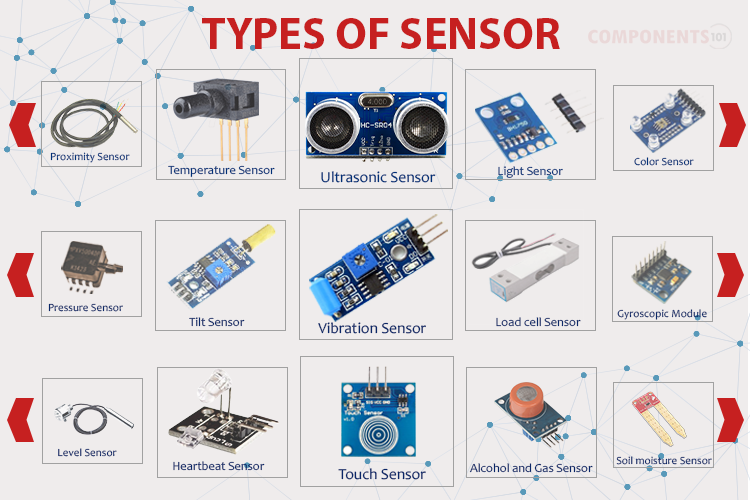Introduction
Sensors have become an integral part of modern technology, playing a vital role in the operation of various devices and systems across industries. From consumer electronics to healthcare, automotive, and industrial automation, sensors enable devices to perceive and respond to environmental changes. Their ability to detect physical, chemical, or biological information and convert it into measurable signals has made them a key component in the digital transformation of numerous sectors. The sensors market has been experiencing robust growth due to rapid technological advancements and an increasing demand for real-time data across applications.
The Evolution of the Sensors Market
The development of sensor technology dates back to the mid-20th century when basic mechanical and electrical sensors were introduced. These early sensors were primarily used in industrial and military applications. Over time, advancements in semiconductor technology enabled the miniaturization and enhancement of sensor performance. In the 1970s and 1980s, microelectromechanical systems (MEMS) revolutionized the sensor industry by allowing for smaller, more accurate, and more affordable sensors.
The rise of the Internet of Things (IoT) in the 21st century further accelerated the demand for sensors. The need for connected devices that can collect and transmit data in real-time has led to significant innovation in sensor technology. Today, sensors are an essential component of smart devices, autonomous vehicles, medical devices, and industrial systems. The continuous evolution of sensor technology, including the integration of artificial intelligence (AI) and machine learning (ML), is pushing the boundaries of what sensors can achieve, from self-diagnosis to predictive maintenance.
Market Trends and Factors Driving Growth
Several key trends are shaping the growth of the sensors market. One of the most prominent trends is the increasing adoption of IoT across industries. As businesses and consumers seek more connected devices and smart solutions, sensors are in high demand to enable data collection, communication, and automation. In industries like manufacturing and logistics, IoT-enabled sensors are driving efficiency, reducing costs, and improving safety through predictive maintenance and real-time monitoring.
The automotive industry is another major driver of sensor market growth. With the development of autonomous vehicles and advanced driver-assistance systems (ADAS), the demand for sophisticated sensors such as radar, LiDAR, and image sensors has skyrocketed. These sensors are critical for enabling vehicles to perceive their surroundings and make decisions, ensuring safe and efficient operation.
Healthcare is also a rapidly growing market for sensors, driven by the increasing demand for wearable devices, remote patient monitoring, and diagnostic equipment. Sensors used in medical devices, such as biosensors and pressure sensors, are enhancing patient care by providing real-time data that can be analyzed for accurate diagnosis and treatment. The COVID-19 pandemic further accelerated the adoption of sensors in healthcare, as remote monitoring and diagnostic tools became essential for managing patient care.
The industrial automation sector is experiencing substantial growth in sensor usage as well. With the rise of Industry 4.0, factories and production facilities are increasingly adopting sensors to monitor machinery, control processes, and ensure product quality. Sensors are crucial in enabling automation, predictive maintenance, and real-time decision-making in industries such as manufacturing, oil and gas, and energy.
Additionally, the ongoing trend toward miniaturization and the development of flexible and wearable sensors is driving growth in consumer electronics. From smartphones and fitness trackers to smartwatches and virtual reality devices, sensors are embedded in nearly all modern gadgets, providing users with a seamless experience.
Market Scope and Market Size
The global sensors market is vast, encompassing a wide range of sensor types, including pressure sensors, temperature sensors, motion sensors, proximity sensors, optical sensors, and chemical sensors. These sensors find applications in industries such as automotive, healthcare, industrial automation, consumer electronics, aerospace, and defense. Each industry utilizes different types of sensors depending on the specific requirements of the application.
In 2022, the global sensors market was valued at approximately USD 150 billion and is expected to grow at a compound annual growth rate (CAGR) of around 8-10% over the next decade. The increasing demand for IoT devices, the proliferation of smart cities, and the development of autonomous vehicles are driving this growth.
The automotive sector holds a significant share of the market due to the rising adoption of sensors for safety and navigation in vehicles. The healthcare sector is expected to witness the fastest growth, driven by advancements in wearable technology and the increasing need for remote patient monitoring. Industrial automation is also a major contributor to the growth of the sensors market, with factories and production facilities investing heavily in smart technologies.
The consumer electronics segment is another critical area of growth, as demand for smartphones, tablets, and wearable devices continues to rise. This segment is expected to see steady growth as companies develop more innovative products with enhanced sensor capabilities.
Country Level Analysis
The growth of the sensors market varies by region, with different countries playing leading roles in specific sectors.
North America
North America, particularly the United States, dominates the sensors market, thanks to its strong presence in the automotive, healthcare, and industrial automation sectors. The U.S. has been a pioneer in the development of autonomous vehicles and ADAS, driving the demand for advanced sensors like LiDAR, radar, and image sensors. The country is also home to several leading sensor manufacturers and tech companies that are at the forefront of innovation in sensor technology.
Canada is another key player in the North American sensors market, with a focus on industrial automation and healthcare. The Canadian government’s investments in smart city projects and IoT infrastructure are creating opportunities for sensor technology to thrive in the region.
Europe
Europe is a significant market for sensors, with countries like Germany, France, and the United Kingdom leading the way in automotive and industrial applications. Germany, in particular, is known for its strong automotive industry, which has driven the adoption of sensors for safety, navigation, and automation. The European Union’s emphasis on sustainability and reducing carbon emissions has also led to the development of energy-efficient sensors for smart grids and environmental monitoring.
The healthcare sector in Europe is also seeing a rise in the adoption of sensor technology, especially in remote patient monitoring and diagnostic devices. As the region continues to focus on healthcare innovation and smart infrastructure, the demand for sensors is expected to grow.
Asia-Pacific
The Asia-Pacific region is experiencing rapid growth in the sensors market, driven by increasing demand in countries like China, Japan, and South Korea. China, in particular, is emerging as a key player in the global sensors market due to its investments in automotive technology, industrial automation, and consumer electronics. The country’s growing automotive industry, coupled with its push toward electric and autonomous vehicles, is driving the demand for sensors.
Japan and South Korea are also important markets for sensors, with strong focus on consumer electronics, healthcare, and industrial applications. These countries are known for their advanced technology and innovation in sensor development, particularly in the fields of robotics, automotive, and healthcare.
Latin America
The sensors market in Latin America is growing, with countries like Brazil and Mexico showing increasing interest in IoT and industrial automation. The adoption of smart technologies in industries such as manufacturing, agriculture, and energy is driving the demand for sensors in the region. However, limited infrastructure and investment challenges have slowed the pace of growth compared to other regions.
Middle East and Africa
The Middle East and Africa region is in the early stages of adopting sensor technology, but there is growing interest in IoT and smart city initiatives. Countries like the United Arab Emirates and Saudi Arabia are investing in smart infrastructure, which is expected to drive future growth in the sensors market. The region’s focus on healthcare innovation and industrial automation will also contribute to the demand for sensors in the coming years.
Conclusion
The sensors market is witnessing significant growth across industries, driven by technological advancements, the rise of IoT, and increasing demand for automation and real-time data. With their ability to collect and analyze data, sensors are playing a critical role in enabling smart devices, autonomous systems, and industrial automation. As the market continues to evolve, regions like North America, Europe, and Asia-Pacific will lead the way in innovation and adoption, while emerging markets in Latin America and the Middle East offer new opportunities for growth. The future of the sensors market looks promising, with advancements in AI, machine learning, and miniaturization paving the way for even more innovative applications.
Get More Detail: https://www.databridgemarketresearch.com/reports/global-sensors-market



